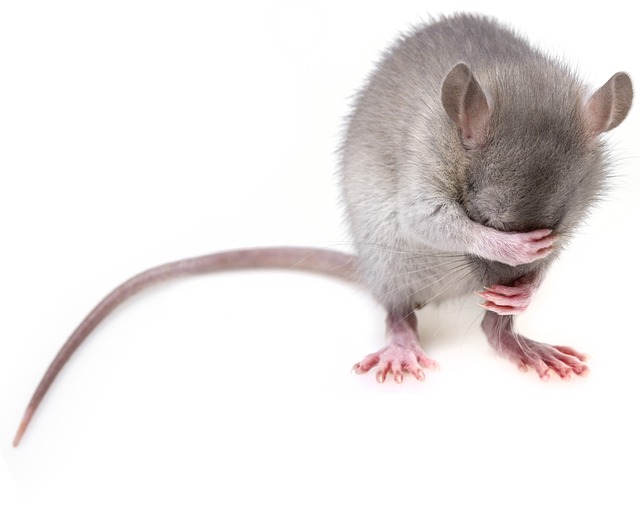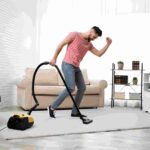
There’s nothing more unwelcome in the comfort of our homes than unwanted guests. No, we’re not talking about pesky relatives or nosy neighbors, but the kind of guests who arrive uninvited, leaving destruction and discomfort in their wake. We’re talking about pests – from sneaky rodents to creepy crawlies and everything in between. When pests infiltrate your home, they can turn it into a battleground, leaving behind not only a physical mess but also a sense of invasion. The good news is that, with the right approach to post-pest infestation cleaning, you can regain control and bid farewell to those unwanted guests.
In this comprehensive guide, we’ll take you through the entire process of post-pest infestation cleaning, from the initial assessment to the crucial steps of disinfection, repairing the damage, and prevention strategies to keep those intruders at bay. Whether you’ve dealt with insects, rodents, or any other unwelcome critters, we’ve got you covered. So, let’s embark on this journey to a pest-free and peaceful home.
Assess the Damage
Before you dive into cleaning up the aftermath of a pest infestation, it’s crucial to assess the extent of the damage and identify the type of pests involved. This step will help you tailor your cleaning and prevention efforts accordingly.
1. Identify the Pest
Determine the type of pest that infested your home. Was it rodents, insects, or something else? Different pests leave different signs and require different approaches for cleaning and prevention.
2. Assess the Damage
Survey the affected areas of your home and assess the damage caused by the pests. Look for signs of nesting, droppings, gnawed materials, and damage to structures or belongings.
3. Health Risks
Consider the potential health risks associated with the specific pest. Some pests, like rodents, can carry diseases that may require additional precautions during the cleanup process.
4. Extent of Infestation
Determine how widespread the infestation is. Is it limited to a specific room or has it affected multiple areas of your home? This assessment will guide your cleaning efforts.
Safety Precautions
Cleaning up after a pest infestation requires some safety precautions to protect your health and well-being. Here are the key measures to take:
Wear Protective Gear
Invest in proper protective gear, including gloves, a mask, and eye protection. This will shield you from potential allergens, contaminants, and any harmful substances associated with pest infestations.
Ventilate the Area
Ensure that the space you’re working in is well-ventilated. Open windows and doors to allow fresh air to circulate and disperse any lingering odors or airborne particles.
Dispose of Contaminated Items Safely
If any belongings have been damaged or contaminated by pests, dispose of them following your local regulations for hazardous waste disposal. Use sealed bags to prevent further contamination.
Tips for Cleaning Up
Now that you’ve assessed the situation and taken safety precautions, it’s time to roll up your sleeves and start the cleaning process.
1. Remove Pests and Nests
Begin by removing any remaining pests and their nests. You can use traps, baits, or the services of a professional pest control expert to ensure that all pests are gone.
2. Vacuum Thoroughly
Use a high-efficiency particulate air (HEPA) vacuum cleaner to thoroughly clean all surfaces, including floors, walls, and ceilings. Pay special attention to cracks, crevices, and corners where pests may have left debris.
3. Disinfect
After vacuuming, it’s essential to disinfect all affected surfaces. Use a solution of water and a suitable disinfectant to clean walls, floors, and any other surfaces that may have come into contact with pests or waste.
4. Wash Fabrics and Bedding
If your infestation has affected fabrics, bedding, or upholstered furniture, wash them using hot water and a suitable detergent. High temperatures are effective in killing most pests and their eggs.
5. Clean and Repair Damaged Areas
Inspect your home for any structural damage caused by the infestation. Repair any holes, cracks, or other entry points that may have allowed pests to enter.
6. Seal Entry Points
To prevent future infestations, seal any potential entry points for pests. This may include gaps around doors and windows, cracks in walls, or openings in your home’s foundation.
7. Dispose of Waste Properly
Dispose of all pest-related waste, including vacuum bags and cleaning materials, following your local regulations for hazardous waste disposal.
Prevention Strategies
Cleaning up after a pest infestation is crucial, but preventing a recurrence is equally important. Here are some prevention strategies to keep your home pest-free:
Regular Cleaning
Maintain a regular cleaning routine to reduce the risk of pests finding a welcoming environment in your home. Pay attention to hygiene, sanitation, and clutter control.
Seal Cracks and Holes
Regularly inspect your home for cracks, holes, and other potential entry points for pests. Seal them to prevent infestations.
Proper Food Storage
Store food items in airtight containers to prevent pests, especially insects and rodents, from accessing your food supply.
Routine Pest Inspections
Consider scheduling routine pest inspections with a professional pest control service to catch any potential issues before they become major infestations.
Landscaping and Yard Maintenance
Maintain your yard and landscaping to reduce pest-friendly environments around your home. This includes trimming vegetation, removing debris, and addressing any standing water sources.
Conclusion
A post-pest infestation cleanup is a challenging but necessary task to restore your home to a safe and healthy living environment. Understanding the nature of the infestation, taking safety precautions, and following a systematic cleaning process are essential steps in the recovery process. Moreover, implementing preventive measures can significantly reduce the risk of future infestations.
Remember that while it’s possible to tackle minor infestations on your own, severe or recurring pest problems may require professional pest control services. The health and safety of your home and your loved ones are worth the effort, and by following these steps, you can say goodbye to those unwanted guests and enjoy a pest-free living space.







